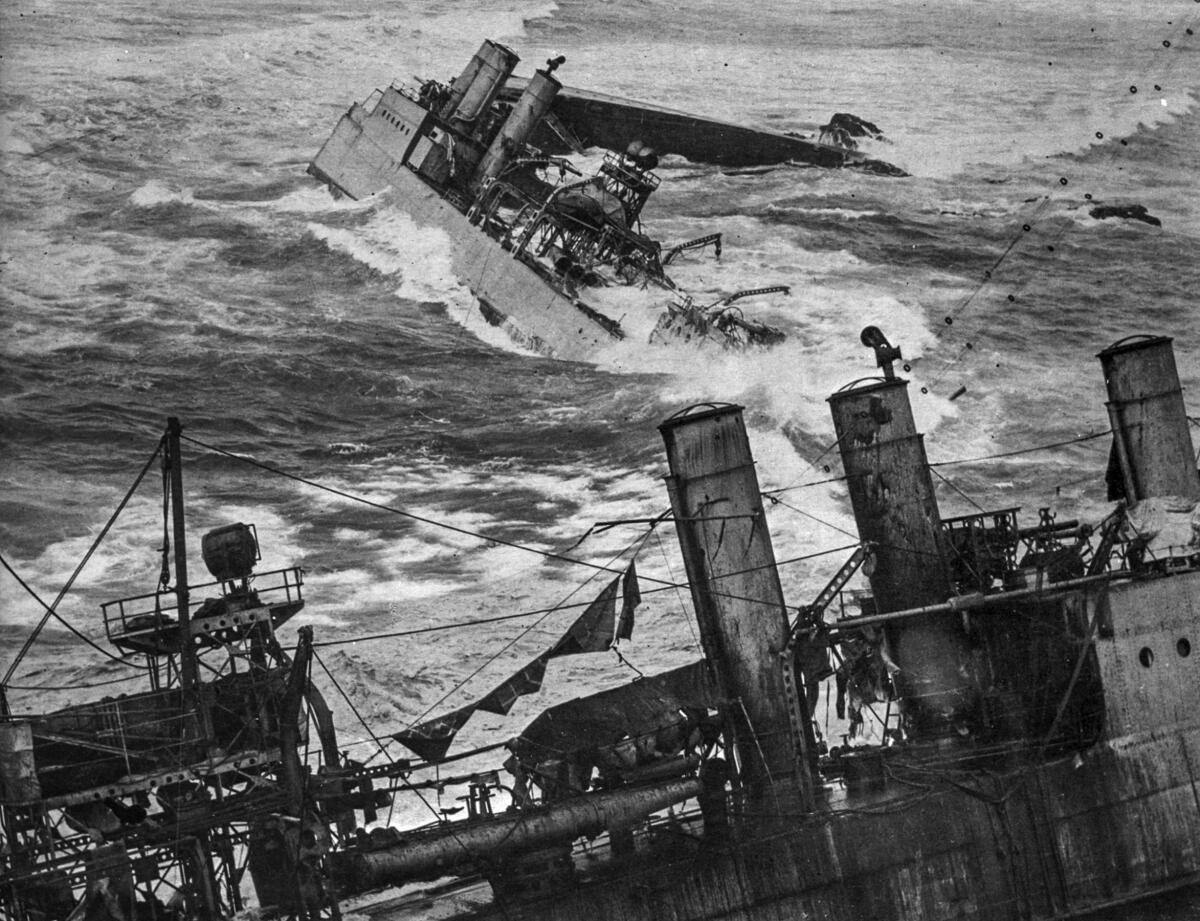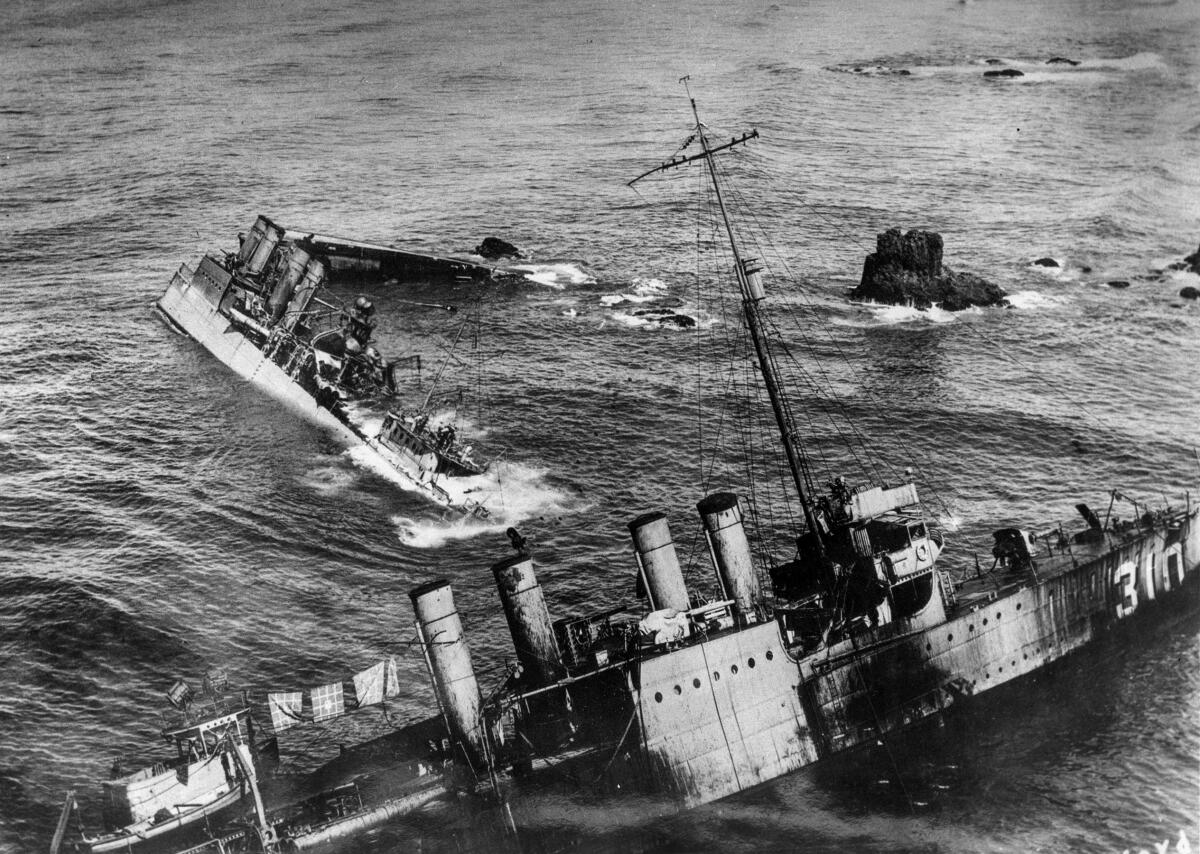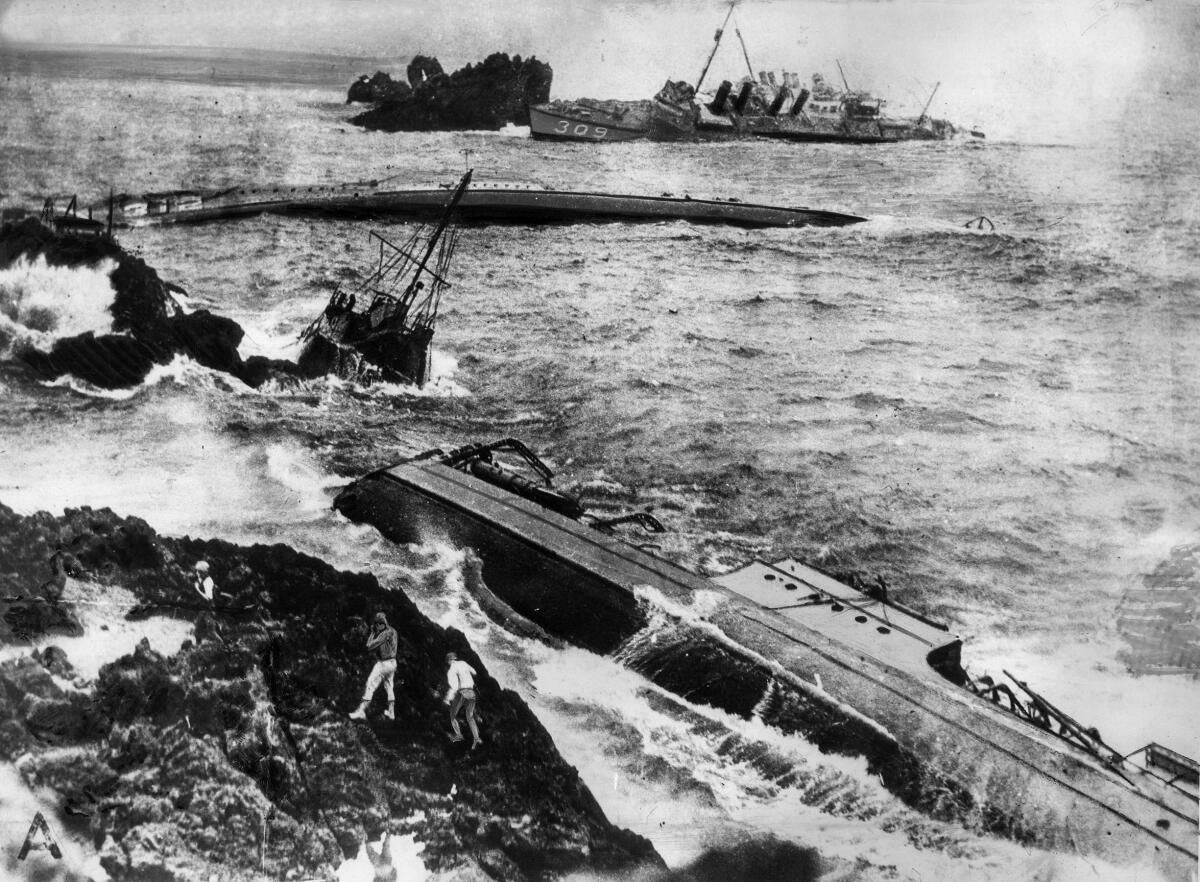From the Archives: 23 sailors killed when U.S. Navy destroyers run aground at Honda Point

- Share via
Point Arguello — California’s version of the Bermuda Triangle — lies northwest of Santa Barbara. The 3-mile stretch between Point Arguello and Point Pedernales has claimed nearly 50 ships and hundreds of lives. The section of coast earned the nickname the “Graveyard of the Pacific.”
On Sept. 8, 1923, in dense fog, seven U.S. Navy destroyers ran aground at Honda Point, north of Santa Barbara. Twenty-three sailors lost their lives.
Fourteen ships of Destroyer Squadron 11 were en route from San Francisco to San Diego in a single column. A navigational error led the column onto the rocks at Honda Point, also known as Point Pedernales, about 60 miles north of Santa Barbara.
In an Oct. 7, 2001, story, Times staff writer Cecilia Rasmussen recalled the disaster:
At the head of the column was the Delphy, under Lt. Cmdr. Donald D.T. Hunter and carrying Capt. Edward H. Watson, who was in command of the 14 destroyers. Behind the Delphy came the S.P. Lee, the Young, the Woodbury, the Nicholas, the Farragut, the Fuller, the Percival, the Somers, the Chauncey, the Kennedy, the Paul Hamilton, the Stoddert and the Thompson.
By nightfall, as fog thickened and the sea grew rough, the officers were unable to see landmarks and stars. Sonar had not yet been invented, and plotting by compass and speed, the officers calculated they were south of treacherous Point Arguello and Point Conception ... and in position to turn left into the Santa Barbara Channel.
At that moment, the flagship Delphy received a signal from a Navy radio station on Point Arguello, indicating it was still north of the landmark. But radio compass bearings were relatively new navigational aids at the time and not trusted by veteran mariners.
Also, the airwaves that night were confused with messages about another wreck — of the mail ship Cuba, 30 miles south on San Miguel Island.
The naval squadron’s officers conferred and decided they were correct about their position. Just before 9 p.m., the Delphy made a hard left turn to destruction — three miles north of the Point Arguello lighthouse. In a grimly disastrous procession, the other destroyers followed.
The Delphy went down and the S.P. Lee, second in the formation, was stuck fast on the reef. The third ship to go down was the Young, commanded by William Loundes Calhoun, a great-grandson of John C. Calhoun, who served as vice president under John Quincy Adams and Andrew Jackson.
“I was starting for the bridge when I felt a slight trembling,” the captain told a court of inquiry. “I dropped everything and went on the run. I reached the bridge in time to be sprawled by a terrific knock. I thought we’d been rammed.”
The Young grazed the Lee and then smashed into the rocky shelf before capsizing. Nineteen crewmen were trapped in their quarters below deck. Three others were lost at sea on a raft, while another drowned after being blinded by shattered glass. A cocker spaniel named Doctor, the mascot of the Young, went down with his ship.
::

Rasmussen’s full story, Love on the Rocks: a Haunted Coast Story, is online.
This incident also is referred to as the Point Arguello Disaster.
The first photo in this post was taken by staff photographer George Watson. The other pictures were obtained from the U.S. Navy by staff photographer Bill Murphy for a 1959 Los Angeles Times story on this disaster.



More to Read
Sign up for Essential California
The most important California stories and recommendations in your inbox every morning.
You may occasionally receive promotional content from the Los Angeles Times.









